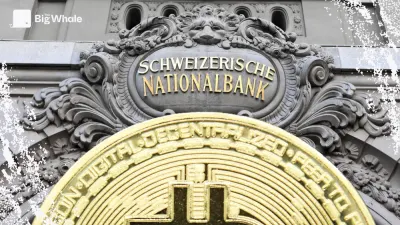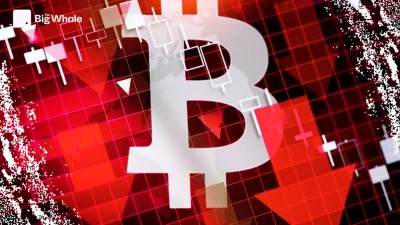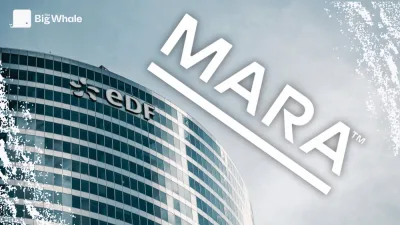TBW - Eclipse: The best of Ethereum and Solana?

Eclipse is an Ethereum layer 2 that aims to deliver much higher transaction throughput than its counterparts thanks to a modular approach optimised for performance. We will see that this blockchain is thus at the crossroads of Ethereum, Solana and Celestia.
In contrast to almost all current layer 2s, which are based on the Ethereum Virtual Machine (EVM), Eclipse uses the Solana Virtual Machine (SVM). In addition, Eclipse relies on Celestia to publish its transaction data.
Many layer 2s have opted for horizontal scaling through the creation of clusters of blockchains that communicate with each other, such as Optimism's Superchain or zkSync's Elastic Chain. Eclipse, on the other hand, wants to focus on a single high-performance chain rather than create another layer 2 ecosystem.
>> Optimism's Superchain: an innovative business model
The advantage of scaling a single blockchain rather than a cluster of blockchains is that there is no need to bridge funds between chains to navigate between applications in an ecosystem. Interoperability between blockchains is a complex topic that creates friction through higher latency and fees.
Within a single blockchain, it is possible to guarantee atomic execution of a group of transactions, i.e. either they can all be executed or none of them are. This is particularly useful for trading aggregators or for liquidations within lending protocols. It is much more complicated to achieve this level of composability across multiple blockchains.
Eclipse therefore borrows the best from each of its components to offer an extremely powerful layer 2 and attempt to become a better version of Solana as well as a leading layer 2.
Eclipse: a better version of Solana?
Eclipse relies on the Solana Virtual Machine (SVM), which is the execution environment that Solana also relies on.
>> Read our fundamental analysis of Solana
The main advantage of the SVM is that it allows transactions to be parallelized, unlike the EVM, which only processes them sequentially one by one. It also allows the creation of local fee markets, meaning that if many transactions wish to interact with a common element, the increase in their priority fees will not impact the fees of the other transactions on the blockchain. Another advantage of SVM is that there is no need to approve transactions before executing them, allowing one-click transactions and therefore a better user experience.
Note that several blockchains have integrated transaction parallelization with EVM, such as Sei, Monad or MegaETH, but this trend is still in its infancy. Similarly, the addition of EIP 7702 scheduled for spring 2025 should eliminate the need to approve transactions within the EVM for wallets that integrate it.
Eclipse takes advantage of its layer 2 position and has a centralised sequencer that produces its blocks and executes transactions. The project does not wish to add several sequencers, as this would reintroduce the need to create a consensus between them and therefore increase the latency of the chain. Instead, the sequencer will be decentralised through a system of rotation of the sequencer, the aim being to have an entity with extremely sophisticated hardware in order to offer the best transaction throughput.
The Solana network, for its part, is limited by the need for its validators spread across the globe to form a consensus, which creates latency and complicates its operation: for example, around 40% of transactions on Solana fail to be executed. Eclipse can afford this centralised architecture because, as layer 2, it can force the withdrawal of its assets to its layer 1: Ethereum.
.png)
Another advantage of Eclipse is that it offers a better redistribution of its revenue to its applications than Solana. For most blockchains today, the Maximal Extractable Value (MEV) generated by application activity is captured by the blockchain validators. The main innovation to enable applications to recapture this value is application specific sequencing (ASS), but this method does not work for SVM. However, Eclipse is working to implement changes to make ASS possible despite its use of SVM.
For more details on SVM and its issues, consult our dedicated article.
Allowing SVM to be redistributed to those who generate it (users and applications) is a crucial element in developing an efficient economy where third-party entities do not capture its value. This also attracts applications to its blockchain rather than incentivising them to create their own blockchain in order to capture the value they generate.
Using Celestia rather than Ethereum for data availability
Layer 2s must publish the data from their transactions to enable proof that they have been correctly executed.
Ethereum introduced blobs earlier this year, a means of temporarily storing data that allows its layer 2s to post their transaction data at a low cost. However, Ethereum's blobs are already saturated, leading to an increase in the cost of layers 2 and a limitation in their transaction throughput. Ethereum's roadmap plans to increase blob capacity substantially with each future update, but this takes time.
That's where Celestia comes in: this blockchain specially optimised to manage data availability (read our fundamental analysis). In a way, it represents the scaling of Ethereum's blobs several years ahead of its roadmap. Celestia therefore offers an abundance of storage capacity at a very low cost for layers 2.
Thanks to this, transaction fees on Eclipse represent only fractions of a cent while allowing very high transaction throughput.
Eclipse is also by far the layer 2 posting the most data on Celestia and is thus responsible for 82% of the data published on the network.
.png)
However, not publishing your data on Ethereum is also a compromise on the security of the chain. Indeed, if the value deposited on all layers 2 using Celestia were to exceed the value of the staked TIAs, it would theoretically be possible to carry out an attack against these layers 2.
In addition, Ethereum L2s that do not publish their data on their L1 do not always allow their users to force the withdrawal of their funds to the main chain, particularly in the case of the sequencer no longer working or censoring a user.
Limits and challenges
Beyond the risks mentioned above, Eclipse is still a recent layer 2 whose security still relies mostly on the project team. The blockchain still lacks a functional proof system and the bridge with Ethereum still relies on a team-controlled multisig.
The layer 2 ecosystem is already extremely competitive with leaders such as Base and Arbitrum, so Eclipse needs to manage to stand out enough to be able to attract users and liquidity. Eclipse's current advantage is that it is the first SVM-based layer 2, which allows it to have an ecosystem of applications that is genuinely different from layer 2 EVM.
Other Ethereum layer 2 SVMs are already in development, notably Atlas. Eclipse will therefore have to continue to differentiate itself in order to stand out.
The Eclipse ecosystem is still in its infancy and still has few native applications, most of which are also present on Solana. Eclipse will also need to succeed in attracting application developers to choose the channel over Solana.
For the moment, the majority of the channel's transactions are linked to the "Turbo Tap" game, where each click represents a transaction. This demonstrates the channel's ability to support a large number of transactions, but it is not representative of its ability to handle stressful periods with more complex transactions.
For more information on its ecosystem and the best ways to gain exposure to the channel, you can read our dedicated article on the subject.
Eclipse's desire to push the capabilities of a single blockchain to the maximum is a strategy that could pay off compared to its competitors, who have developed blockchain ecosystems instead of focusing on developing their own.
Eclipse has an airdrop campaign underway, so it's still too early to judge the future of the relatively new blockchain. But its positioning at the intersection of Ethereum, Solana and Celestia could well prove to be an advantageous strategy in the future.



